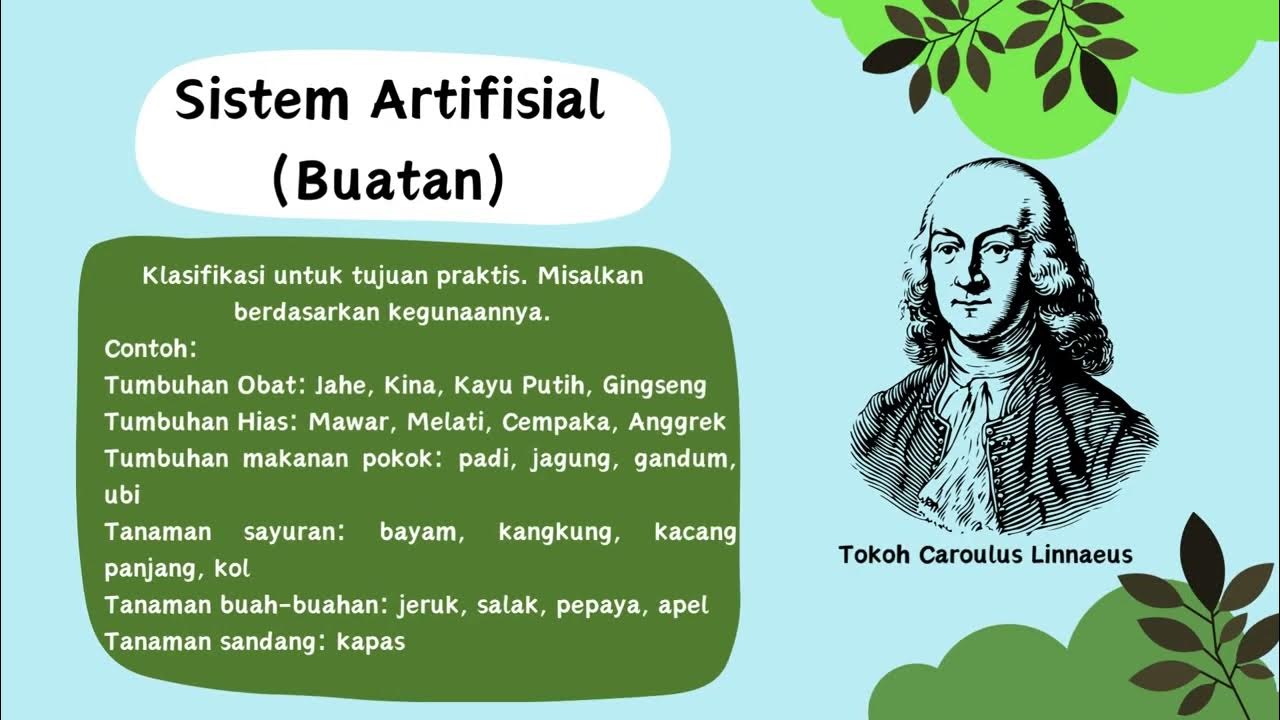Kenali Pengelompokkan Makhluk Hidup dengan Cara Ini! Kunci Determinasi! | IPA | SayaBisa
Summary
TLDRThe video explains the concept of classification in biology, which groups living organisms based on shared characteristics. The process, known as taxonomy, was pioneered by Carolus Linnaeus and divides organisms into seven taxonomic ranks, including Kingdom, Phylum, Class, Order, Family, Genus, and Species. The video also discusses the use of a dichotomous key to identify organisms, with an example of classifying a plant, such as corn, based on its features. The video emphasizes the brilliance of Linnaeus' classification system and highlights the role of God in inspiring his intellect.
Takeaways
- 😀 Classification groups living organisms based on shared characteristics, a process known as taxonomy.
- 😀 Carolus Linnaeus is credited with developing the taxonomy system that classifies organisms into seven taxa: Kingdom, Phylum, Class, Order, Family, Genus, and Species.
- 😀 The order of taxa is determined by the most general traits at the top, becoming more specific as you move down.
- 😀 A key concept in classification is the use of a 'determination key,' which is a guide to identifying organisms based on their characteristics.
- 😀 A dichotomous key is a simple form of determination key where two contrasting characteristics are presented at each step.
- 😀 By using a dichotomous key, one can narrow down and classify an organism based on its traits, step by step.
- 😀 The process of using a dichotomous key involves starting with broad characteristics and progressively working towards more specific traits.
- 😀 An example of using a dichotomous key is classifying a plant by its characteristics, such as whether it has spores or seeds, and whether its seeds are covered or not.
- 😀 Linnaeus' classification system is influential in organizing the vast diversity of life on Earth.
- 😀 The ability to classify organisms using such keys and systems is a remarkable example of human intelligence, made possible by the divine wisdom granted to Linnaeus.
Q & A
What is classification in biology?
-Classification is the process of grouping living organisms based on shared characteristics. It helps to categorize and understand the relationships between different species.
What is the scientific term for the study of classification?
-The scientific term for the study of classification is 'taxonomy'.
Who is credited with developing the system of classification?
-Carolus Linnaeus is credited with developing the system of classification, which organizes living organisms into hierarchical groups.
What are the seven main taxonomic ranks in Linnaeus's classification system?
-The seven main taxonomic ranks in Linnaeus's classification system are: Kingdom, Phylum (or Division), Class, Order, Family, Genus, and Species.
How does the classification system work in terms of similarities and differences?
-The classification system is structured based on the shared characteristics of organisms. The higher the rank, the more general the characteristics are, and the further down the ranks, the more specific the characteristics become.
What is a 'determination key' in classification?
-A determination key is a tool used to identify and classify organisms based on a series of questions about their characteristics. It guides the user through a process of elimination to identify the species.
What is a dichotomous key?
-A dichotomous key is the simplest form of a determination key. It consists of pairs of contrasting characteristics, and each choice leads to further divisions until the organism is identified.
How does a dichotomous key help in identifying an organism?
-A dichotomous key helps by presenting a series of binary (yes/no) choices, allowing the user to narrow down the options step by step until they can identify the organism based on its specific traits.
Can you provide an example of how a dichotomous key is used in practice?
-An example from the script shows how a plant, starting with the characteristic 'not spore-producing', is gradually narrowed down through further choices to identify it as corn, based on its specific traits like seed structure.
What is the significance of Linnaeus's work in taxonomy?
-Linnaeus's work in developing a systematic classification method revolutionized the way scientists understand and categorize life. His approach allowed for a more organized and consistent way to identify species and trace evolutionary relationships.
Outlines

This section is available to paid users only. Please upgrade to access this part.
Upgrade NowMindmap

This section is available to paid users only. Please upgrade to access this part.
Upgrade NowKeywords

This section is available to paid users only. Please upgrade to access this part.
Upgrade NowHighlights

This section is available to paid users only. Please upgrade to access this part.
Upgrade NowTranscripts

This section is available to paid users only. Please upgrade to access this part.
Upgrade Now5.0 / 5 (0 votes)





